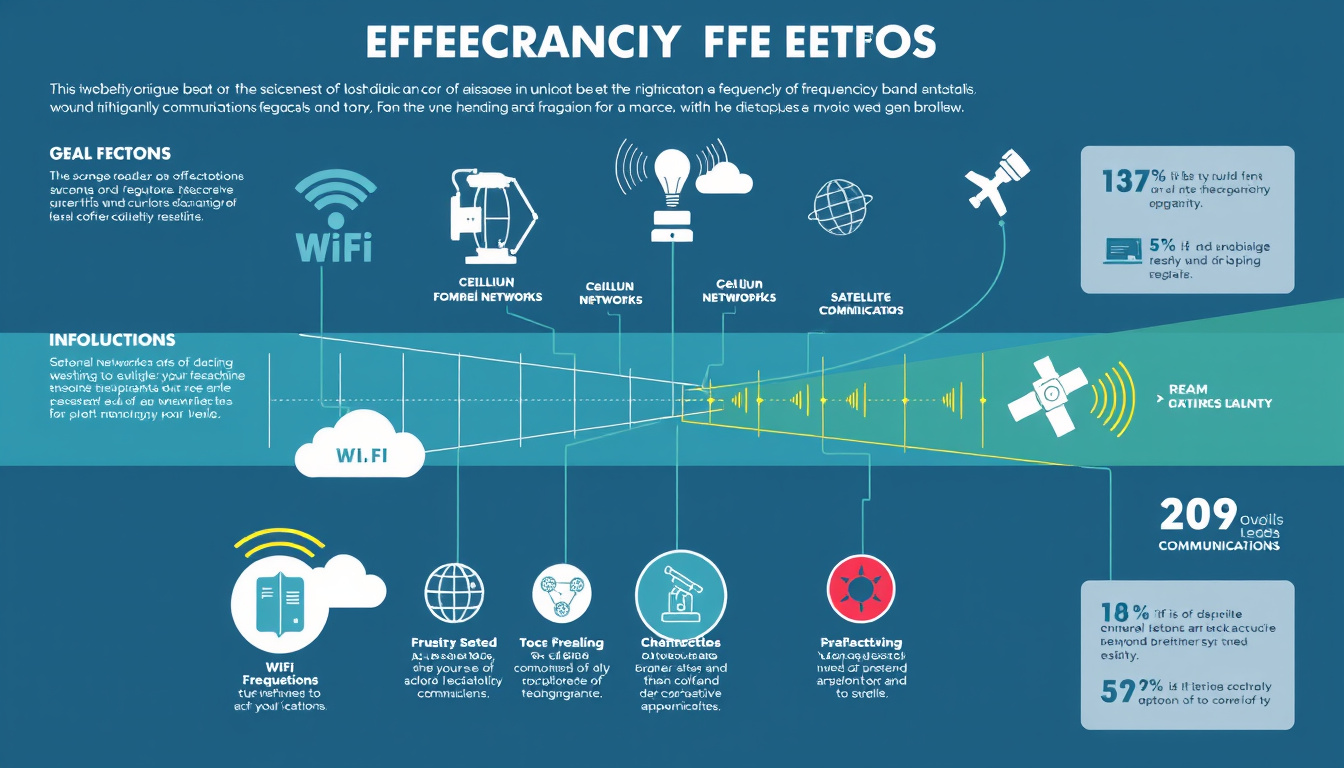Frequency bands are a fundamental aspect of modern communication technologies, forming the backbone of nearly every wireless system we depend on today. This article provides a thorough overview of frequency bands, their classification, uses, and regulatory considerations, helping you to understand their critical role in telecommunications and technology.
What Are Frequency Bands?
Frequency bands refer to defined segments of the electromagnetic spectrum, categorized based on their frequency range. The entire radio spectrum encompasses frequencies from 3 Hz to 300 GHz (or higher, extending into terahertz), and these ranges are divided into distinct bands for various applications, primarily to manage bandwidth efficiently and prevent interference among different services.
The Structure of Frequency Bands
The International Telecommunication Union (ITU) is the body responsible for regulating and assigning parts of the radio spectrum to different services. Each frequency band serves specific purposes—ranging from AM/FM broadcasting to mobile communications and satellite transmission. The ITU recognizes twelve primary frequency bands:
- Extremely Low Frequency (ELF): 3 Hz – 30 Hz
- Super Low Frequency (SLF): 30 Hz – 300 Hz
- Ultra Low Frequency (ULF): 300 Hz – 3 kHz
- Very Low Frequency (VLF): 3 kHz – 30 kHz
- Low Frequency (LF): 30 kHz – 300 kHz
- Medium Frequency (MF): 300 kHz – 3 MHz
- High Frequency (HF): 3 MHz – 30 MHz
- Very High Frequency (VHF): 30 MHz – 300 MHz
- Ultra High Frequency (UHF): 300 MHz – 3 GHz
- Super High Frequency (SHF): 3 GHz – 30 GHz
- Extremely High Frequency (EHF): 30 GHz – 300 GHz
- Terahertz (THz): Beyond 300 GHz

These classifications allow for organized use of the spectrum across various applications such as broadcasting, navigation, and communications.
Frequency Band Designation Systems
Different organizations utilize various systems to designate frequency bands. In addition to the ITU, the Institute of Electrical and Electronics Engineers (IEEE) also has established a system to classify radar bands using letters (e.g., L, S, C, X, Ku, and Ka bands). These designations help professionals in communications and engineering to easily reference specific bands and their capabilities.
Applications of Frequency Bands
Frequency bands are crucial for numerous applications, adapting to the needs of diverse sectors:
- Broadcasting: FM and AM radio stations operate predominantly within the medium and high-frequency bands, providing audio services to masses.
- Mobile Communications: Cellular networks utilize UHF and SHF bands to facilitate mobile phone communications, data services, and internet access.
- Satellite Communication: UHF to EHF bands are crucial for satellite operations, enabling long-distance communications and data transfer.
- Medical Applications: Certain frequency bands play a role in medical imaging technologies, such as terahertz imaging, which has potential applications in diagnostics and security screening.
Regulatory Environment
To manage the crowded radio spectrum and mitigate interference, the usage and assignment of frequency bands are heavily regulated by both national and international authorities. The ITU sets the global standards, while countries have their specific regulatory bodies, such as the Federal Communications Commission (FCC) in the United States, to enforce these standards locally. These bodies allocate frequencies for different services, ensuring efficient and effective use of the spectrum.
The Future of Frequency Bands
As technology advances, so does the demand for more bandwidth. With the proliferation of devices like smartphones, IoT (Internet of Things) gadgets, and high-speed internet technologies, there is an ongoing effort to optimize frequency use. Innovations like frequency reuse and dynamic spectrum management are being explored to enhance bandwidth efficiency, allowing for the growing demand for wireless communication.
Conclusion
Understanding frequency bands is essential for grasping how modern communication technologies function. By delineating specific sections of the electromagnetic spectrum for various applications, frequency bands enable efficient use of radio waves for everything from broadcasting to satellite communication. As we move forward, ongoing advancements in technology and changes in regulatory frameworks will continue to shape how these bands are utilized, paving the way for unprecedented innovations in communication and technology.



